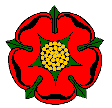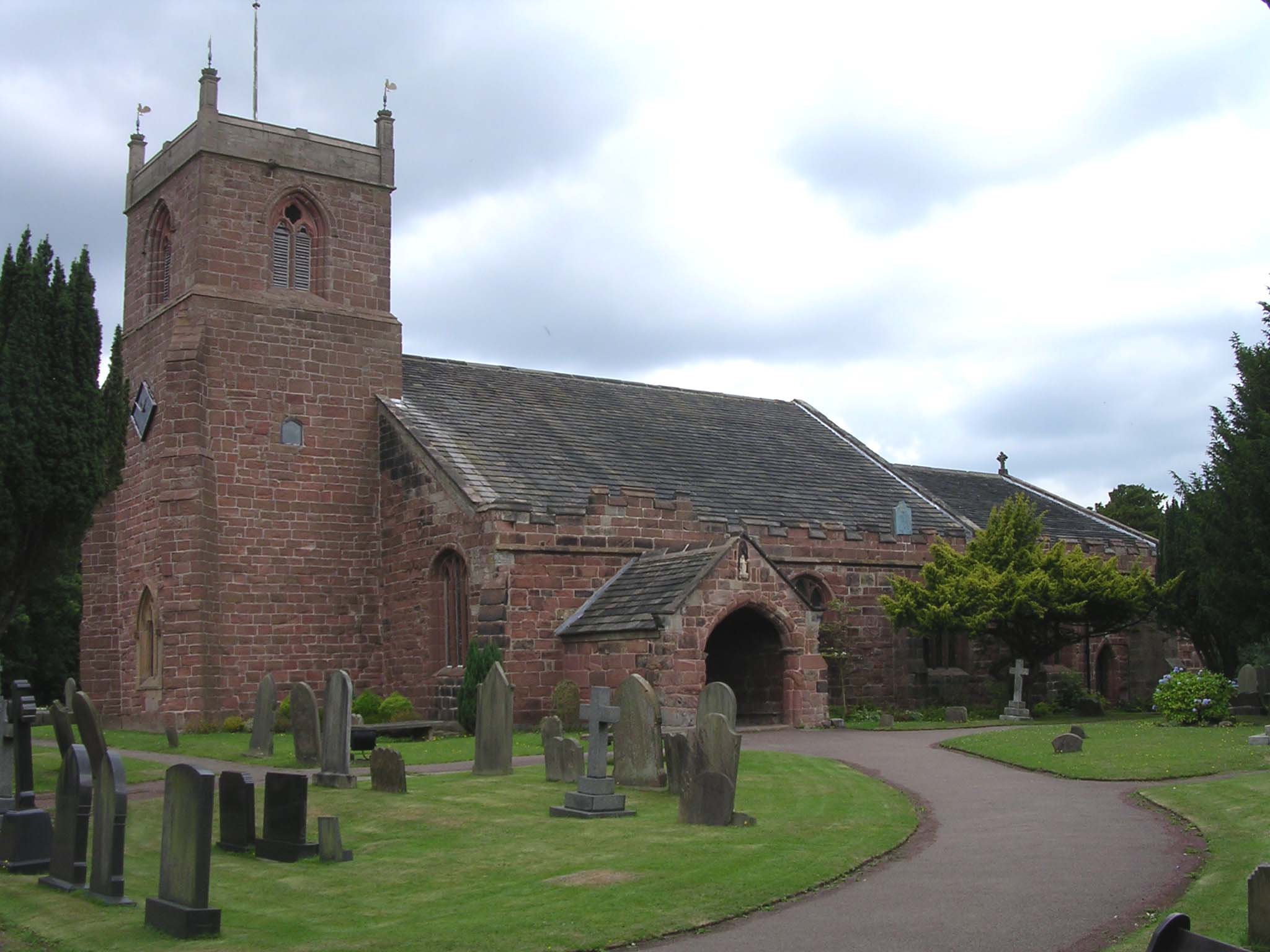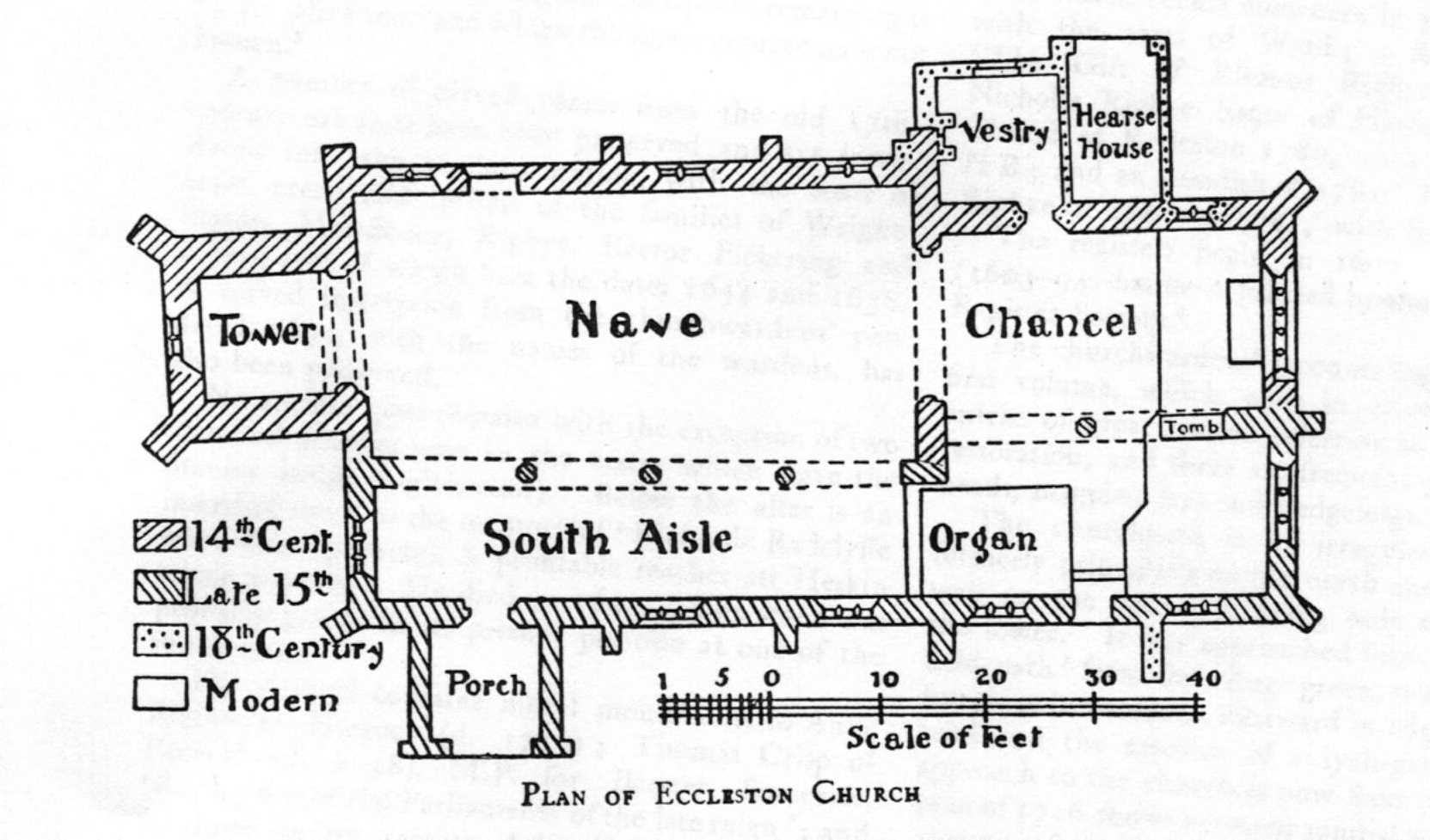 |
The
Parish of Eccleston |
 |
The Church of St Mary the Virgin
in the Parish of Eccleston
 | |
Picture is copyright Bob Winder 2005 and is used with permission |
Our Church
We offer you a very warm welcome to St Mary's Church, Eccleston, one of the oldest churches in Lancashire. The name Eccleston comes from the ancient British word for church ‘egles’ to which was added the Old English word ‘tun’ meaning place or town. Therefore Eccleston means churchtown.
As you approached the Church you passed through the Lych Gate. It is made of oak with oak shingles and came from one tree. The name Lych Gate means ‘Gate of the Dead’ and in mediaeval times was where the deceased waited to be taken into Church. The Lych Gate was erected and dedicated to the memory of William Bretherton, one time patron of the living.
Although there has been a church on this site since 1094 AD, the present building in its original form was in existence in 1182, but there are very good reasons for believing that there may have been a Saxon church on this same site. On the altar tomb rests part of a Saxon cross discovered in 1915 in a ditch adjacent to the church. The original building was enlarged in the 13th Century by the addition of the South aisle. The hexagonal pillars with plain and somewhat severe capitals and pointed arches belong to this period. The South aisle was carried straight through to provide the Chantry Chapel, correctly called the Jesus Chapel as the whole of the church is dedicated to The Blessed Virgin Mary. The tower was probably added in the 13th Century with the bell stage added in the 15th Century and the parapet added in 1733. The porch at the South entrance to the church was refurbished in 1996. A statuette of the Virgin Mary commissioned by Rev'd Richard Bretherton Hawkshead-Talbot, has been placed in the niche in the entrance, there having been no statue there since the 16th Century. The sculptor of the statue is Thompson Dagnell of Bretherton. The Rev'd Bretherton Hawkshead ¬Talbot was Rector of this Parish from 1958 to 1979 and he commissioned the figure in memory of his father and brother who were Rectors of the Parish before him.
A plan of the church is shown below:-
 | |
Source: The Victoria History of the county of Lancashire, Volume 6. |
The Font
On entering the church by the South door, to your left is the font which dates from the 13th Century and restored in 1909. It is octagonal, six panels being decorated with representations of the symbols of the passion, crown of thorn, nails and so forth. On the other two panels are the Legs of Man and on the other an eagle's claw which appear on the coat of arms of the Earl of Derby, who at the time was patron of the 'living'. The font lid probably dating to the 1909 restoration, so it is not the original cover. The two metal fittings on the rim of the font show how, by sliding a metal bar through the original cover, it was well and truly fastened down as the water in the font was solemnly blessed on Easter Eve and not changed until the next year.
The Tower and the Bells
As you pass the pews on the left at the back of the church, you will notice plaques of the 17th Century church wardens. The entrance to the bell tower and Choir vestry is through a glazed archway. The present tower has a ground floor ring of six bells with the following inscriptions:-
| 1 | The Treble 1727 Prosperity to this Parish |
| 2 | 1727 Prosperity to the Church of England |
| 3 | 1727 A.B. Rudhall cast us all. Recast in 1737 |
| 4 | 1802 RB/W William Breers Church Warden |
| 5 | 1727 I to the church the living call and to the Grave do summon all |
| 6 | 1888 The widow gave me to the honour of God and to the loving memory of William Hawkshead-Talbot |
It was recorded that in 1552 in an inventory of church goods, in the reign of Edward VI there were ‘lii bells its the stepell. Ij sacrying belles’ therefore it can be seen that bells have been rung in Eccleston for many hundreds of years. Today's bells are rung full circle in the style invented in England in the 17th Century They are rung before church services to call people to prayer, for weddings and the tenor bell is solemnly tolled for funerals.
The tower had a parapet added in 1733 made of stone from Harrock Hill.
The clock which has two faces, one on the West wall of the tower, the other facing into the church above the glazed archway It was given to the memory of Harriot Jane Yates by her nephews and nieces on Christmas Day 1898. It runs for five days so requires to be wound twice a week, although at the time of writing, there are plans to renovate it and for it to be wound electrically.
By the North door are portions of the original medieval roof beams with the words ANNUl SUI' (year of his) carved on them. The gilt and black paint is original. The North door is a lovely mediaeval studded door with a spy hole and is best seen from outside.
Turning round looking back to the arch behind and looking up, just to the left at the top of the arch is the face of a lady. One feels it must be the face of the Blessed Virgin Mary, but why so high? Perhaps lovingly hewn by a workman during the building of the church. Why so high up is a mystery.
There is a list of past Rectors on the North wall and there is an interesting story regarding Richard Parr DD. He was ousted by the Cromwellians and sought refuge in the Isle of Man under the protection of the Earl of Derby He was replaced by Edward Gee who is known as 'the Intruder' as he was an un-ordained puritan. Dr. Parr became Bishop of Soder and Man and the people of Eccleston so loved him that they named two roads after him - Doctors Lane and Parr Lane.
Behind the pulpit is a memorial to Meliora Dicconson and the lovely poem:-
The tender wife and friend and most sincere
Need no mechanic help to swell the teat
In heartfelt numbers never meant to shine
Doth flow recitles over a heart like mine
She was but I want words to tell you what
Think what a wife should be and she was that
Beloved by her servants as a dear mother
But oh she is gone and not left such another
She has gone to the Celestial mansion
her blest abode
To sing with the saints the praises of her God
The Chancel Arch
This marks the dividing line between the ‘rooms’ of the church. Prior to the Reformation the arch would have been filled with a Rood screen and evidence can be seen where the screen was fastened to the stonework. The purpose of a Rood screen in mediaeval times was to divide the church with doors that locked when no service was taking place. They could only be unlocked on the side of the Altar, hence the Priest's door on the side of the chapel. Our ancestors were very devout, yet saw nothing wrong in using the Nave for purely ordinary things: an annual fair, the church Ale and many other events. The screen doors would he locked on the Sanctuary side, only being unlocked by the priest who would have entered by the Priest's door.
The Sanctuary
The East window in the Sanctuary is the depiction of the Crucifixion of Christ and was given in the year 1908 by the family of Rev'd William Yates, Rector of this Parish from 1854 to 1883, at the cost of £400- a great deal of money in those days. Below the East window and now beneath the Sanctuary carpet is a gravestone of a teacher, Richard Radcliffe, born in Ribchester. He was the schoolteacher at the school in Heskin. He died in 1623 at the age of 33. It is unlikely that this was the original burial place of Richard Radcliffe but the tablet laid there when a refurbishment was carried out in the 19th Century. There is also a very fine mosaic floor beneath the carpet which will of course preserve both of these items.
A new Altar has recently been commissioned and installed by Ormsby of Scarisbrick. It is of light oak and the design was originally inspired by the traceries taken from the tomb on the right of the Altar It is given in Thanksgiving for 900 years of Worship in Eceleston on this site.
The Altar Tomb
The tomb has a mediaeval brass embedded in the top. It is the figure of a priest wearing processional robes. This is unique in Lancashire and it is a miracle it survived when Cromwellian soldiers were quartered in Eccleston before the Battle of Lathom. The surrounding brasses giving details of the deceased were destroyed, but it would appear that it is the tomb of William Wall, Rector of this Parish from 1493 to 1511. Near the tomb stands the base of a Norman font carved with cable work popular at the time.
The Side Chapel
The plaque tells us that this was restored to the memory of Rev'd Humphrey Bretherton. The beautiful East window of the chapel was given by the widow of Major William Yates. On the South side of the chapel is another mediaeval piscina and the small Priest's door. Outside the Priest's door, carved in the wall is a weaver’s shuttle and on the stone to the left is a coal trolly. Both signs of the local trades in times gone by.
The organ, which dates from 1908, resides behind the arch of the side chapel. It was completely overhauled and rebuilt in 1964. It has a really beautiful tone. The instrument has recently been cleaned and overhauled by Rushworth and Dreaper Ltd of Liverpool, who have had the contract for caring for the organ since 1938.
On the wall by the side of the chancel arch, just above the piano, is a most unusual memorial bearing the coat of arms of the Rigbye family, dedicated to Anna M Rigbye who died on the 15th July 1716. The memorial is bronze and now very difficult to read but it must have been painted and gilded. The remains of the gilding can just he seen.
The Lectern
The Lectern is Victorian and the beautifully carved eagle represents the power and strength of the readings from the Bible. Chapter 41 of Isaiah states: “Those who trust in the Lord for help will find their strength renewed. They will rise on wings like eagles."
The Churchyard
The Churchyard has been extensively enlarged over the years. In l894 the Rector, Rev'd Humphrey Bretherton, gave an acre of land, and again in 1942 it was extended to the East when a wall was removed and the stone used to construct the Sextons worlrshop and conveniences. The war memorial was dedicated in 1924 to the men of the village who were lulled in the 1914-1918 war.
We hope that you have enjoyed your visit to our beautiful church and that you will visit us again.
May God be with you
| Eccleston Home & Contents | ©Lancashire OnLine Parish Clerks | Lancashire Home |